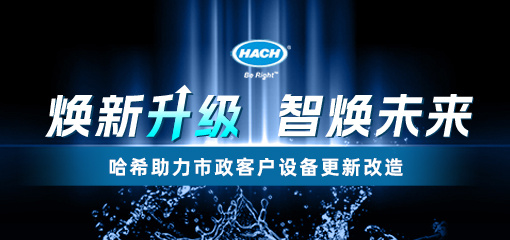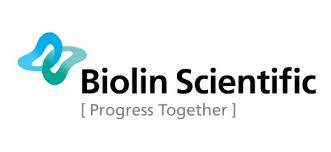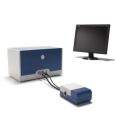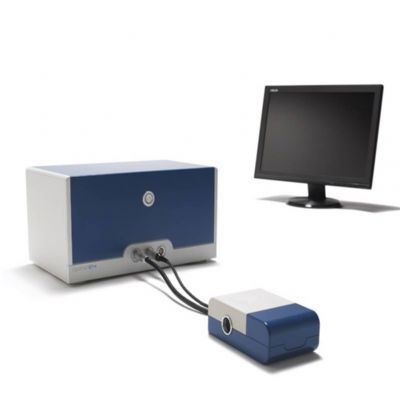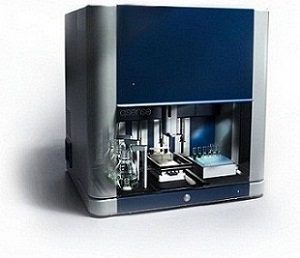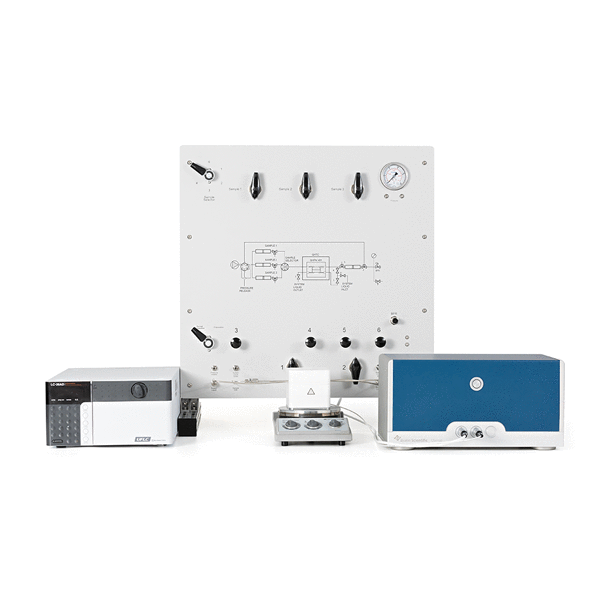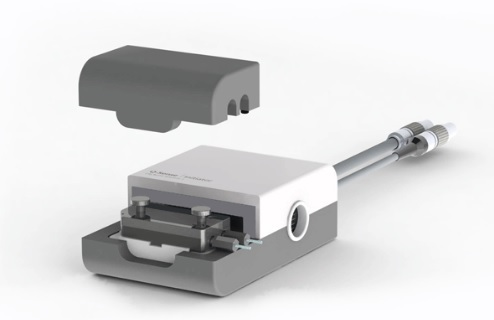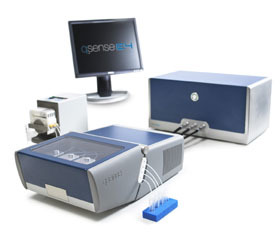
在活体生物钟,细胞膜对水的透过性能扮演了非常重要的角色。人体中还有70%的水分,这些水分需要被运输到泪腺,口腔,肾,脑,肺,和血液等等。人体的皮肤的最外层通过调制,吸收和释放调节水份。在这篇文章中,作者通过QCM-D成功研究分子膜水分子透过性能,这对于化妆品,药学和医学应用方面具有深刻的影响。
方案详情

APPLICATION NOTEQS 405-32-1 USING THE QCM-DTECHNOLOGY TO CHARACTERIZEMEMBRANE WATER PERMEABILITY Transport of water molecules through cell membranes is crucial for many vital functions in living organisms.The humanbody consists of ca. 70%water, which needs to be transported to tear ducts, saliva glands, kidneys,brain, lungs andblood, etc. Additionally, the outermost layer of the skin regulates hydration by modulating the uptake and release ofwater. Methods for studying such processes are therefore relevant for skin related cosmetics, pharmacy and manyother medical applications. In this work the QCM-D technology was successfully applied to such studies. INTRODUCTION The outermost layer of the skin, theStratum Corneum (SC), is responsiblefor water transport into and out of theskin in order to regulate the hydrationand prevent dehydration. Additionally,it protects the underlying tissue frominfection and damage caused by ex-ternal factors. Normally the SC layeris roughly 10-40 um thick and underextended immersion in water its in-creased hydration is revealed by thewrinkling of the skin. Understandingwater uptake processes as related tolipid composition is highly relevant forskin related pharmaceutics and cos-metics, and also for understanding thetoxicity of different compounds. Modelmembranes with different lipid compo-sitions are often used in such studies. APPROACH AND EXPERIMENTALSETUP In the work reviewed in this applicationnote, a Q-Sense E4 instrument hasbeen used and run in a well-controlledgas environment. Nitrogen gas wasconnected to the flow chambers and thehumidity could be controlled with highprecision using a moisture exchanger. The modelSC membranes consisted ofceramides, free fatty acids and choles-terol in different compositions. Thesewere applied to the sensor surface(Au) using an airbrush, thereby forming Figure 1. (A) The thicknesses of the membraneduring increased humidity as calculated usingthe Voigt model in QTools. Displayed is also theAfresponse relative to the uncoated sensor.(B)The frequency change Af and (C) the dissipa-tion change AD for the uncoated sensor and thesensor coated with a lipid membrane in a dryand a humid stream respectively. The 3rd andthe 5th overtones are shown. tightly-packed and homogenous lipidmembranes with thicknesses ranging from a few hundred nanometers up toseveral micrometers. By analyzing anuncoated sensor in dry nitrogen gas, abaseline could be established. Meas-urements under identical conditionswere performed after an ex-situ coat-ing of the membrane. From the rela-tive changes in resonance frequency(mass uptake), Af, and energy dissi-pation (viscoelasticity), AD, the mem-brane thickness could be determinedusing the Voigt viscoelastic model inQTools (Figure 1). When the humidity over the lipid mem-brane is increased water vapor diffus-es into the lipid molecules and causesswelling. This process results in adecrease in Af (mass increase) andincrease in AD (softer film). From theswelling characteristics it was possi-ble to extract physical properties suchas solubility, S, and diffusivity, D, ofthe water molecules in the membrane(Figure 1). The water permeability, P,of the membrane,i.e. at which rate wa-ter molecules are able to permeate, isproportional to the product of S and D. RESULTS AND DISCUSSION Different parameters were varied in or-der to determine their impact on S, Dand thereby P. First the thickness of theSC membrane was varied, with a con-stant composition, as shown in Figure 2. Thickness (um) Figure 2. (A) The water permeability, P, (B) dif-fusivity, D, and solubility, S, for the model SCmembrane plotted as a function of membranethickness. All other parameters were kept con-stant. D strongly increased with the mem-brane thickness whereas the effect onS was less pronounced. As an over-all effect P increased with increasedmembrane thickness. This is to be ex-pected since it is well known that thediffusion of water molecules normal to the membrane surface is the limitingfactor, rather than the diffusion laterallyin the membrane. Additionally, the effect of the free fattyacid chain length was investigated.Due to a slight increase in hydropho-bicity with increased chain length, adecrease in S could be observed. D.on the other hand, increased with thechain length; as a result of these off-setting trends in S and D, P remainedconstant. When comparing saturatedand unsaturated free fatty acids it isclear that P in the former case is signif-icantly lower (Figure 3). This is due tomore order in the lipid membrane likelyleading to a higher resistance againstpenetrating water molecules. This effect is utilized in cosmetics andskin related pharmaceutics. The ad-dition of unsaturated free fatty acidsincreases the water permeability of theskin and therefore benefits moisturizerperformance. Model membranes canbe customized on a molecular levelin order to optimize factors affectingthe membrane permeability on a verydetailed level. CONCLUSIONS The effect of membrane compositionon water permeability in SC wassuccessfully studied using QCM-D.Based on the swelling characteris-tics, which were sampled throughthe changes in resonance frequencyand energy dissipation, the diffusiv-ity and solubility of water moleculesin the membrane was calculated. Thepermeability is directly proportionalto the product of these two factors. 20 .A Figure 3. (A) The water permeability, P, (B) dif-fusivity, D, and solubility, S, for the model SCmembrane with varying lipid chain length andsaturation. ACKNOWLEDGEMENTS We would like to thank Professor Dae-yeon Lee at the University of Pennsyl-vania for kindly providing valuableinput. REFERENCES [1] Myung Han Lee, Bomyi Lim, JinWoong Kim, Eun Jung An and DaeyeonLee. Effect of composition on water per-meability of model stratum corneum lipidmembranes.Soft Matter, 2012, 8,1539-1546. ( Headquarters S c andinavia: B i olinScientific AB , Hangpilsgata n 7, 4267 7 VFrolunda, Sweden, +46 31 7 69 7 6 9 0, w ww.biolinscientific.com, info@biolinscientific.com E urope/Middle East: Biol i nScientific, +46 31 7 6 9 7 6 90, inf o @bi o linscien-tific.com North and South Ame r ica: BiolinScientific, Inc . , +1 ( 87 7 ) 773 6730, us@bi o linscientific.com UK: BiolinS c ientific, ) ( +44 ( 0)161 4 36 9 7 00, u k @biolinscientific.com A s ia: B i olinScientific,+86 2 1 6165 9 7 69, vanilla.chen@biolinscientific.com ) asense WWW.a-sense.comQCM-D-Quartz Crystal Microbalance with Dissipation monitoring
确定
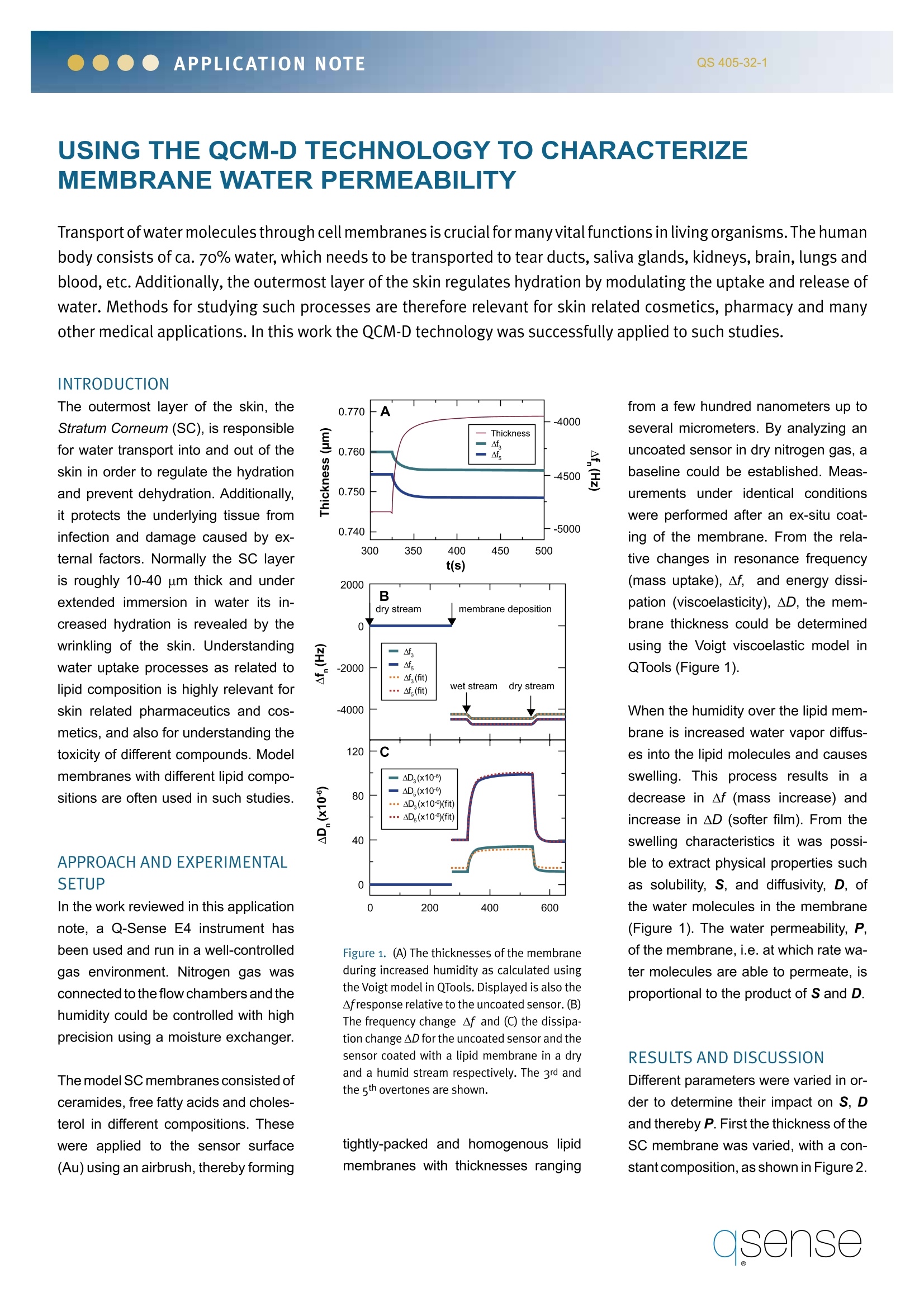
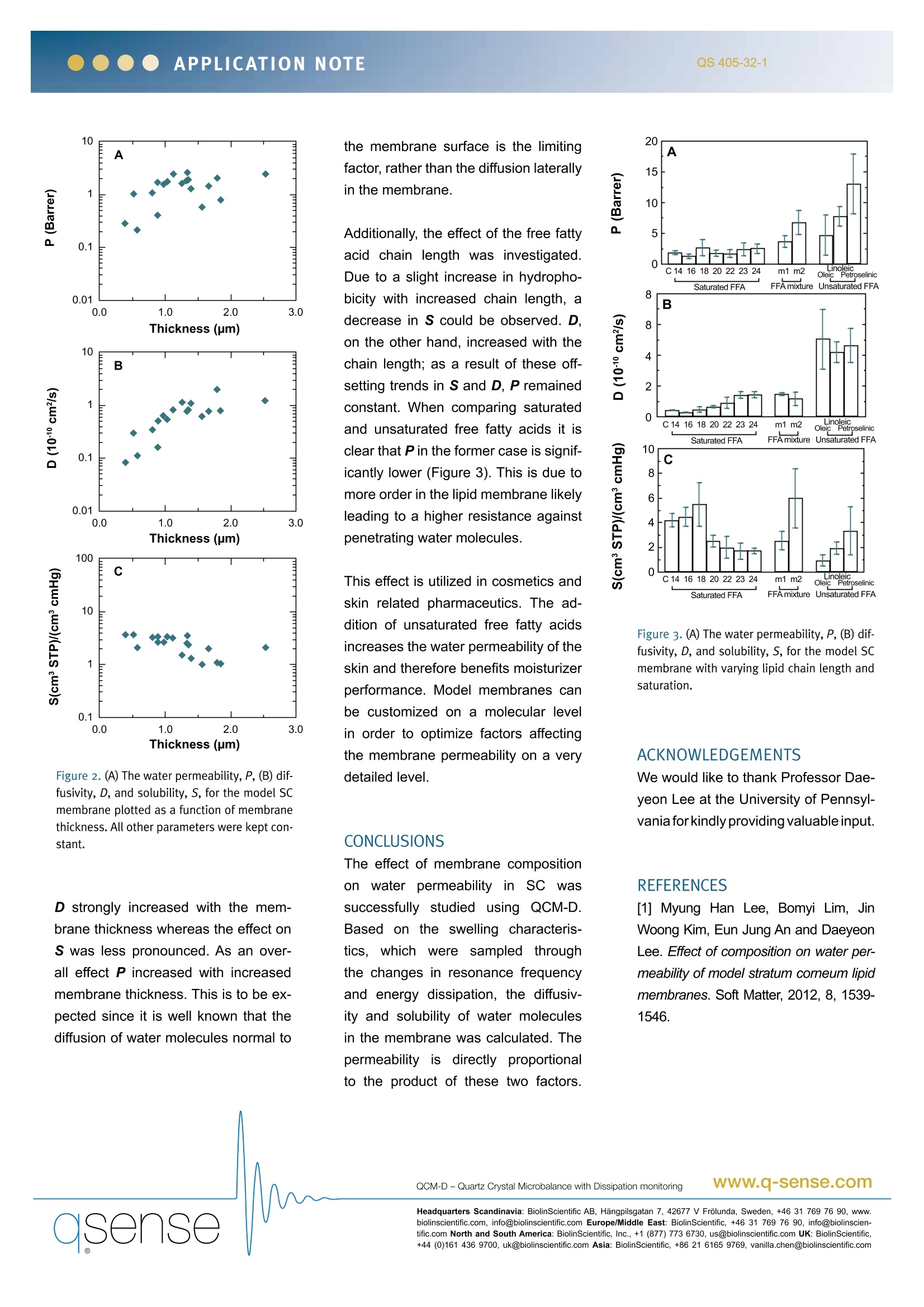
还剩1页未读,是否继续阅读?
瑞典百欧林科技有限公司为您提供《使用QCM-D技术检测分子膜水分子透过性能》,该方案主要用于其他中--检测,参考标准--,《使用QCM-D技术检测分子膜水分子透过性能》用到的仪器有QSense卓越版四通道石英晶体微天平、QSense Explorer扩展版石英晶体微天平、QSense全自动八通道石英晶体微天平
推荐专场
相关方案
更多
该厂商其他方案
更多

